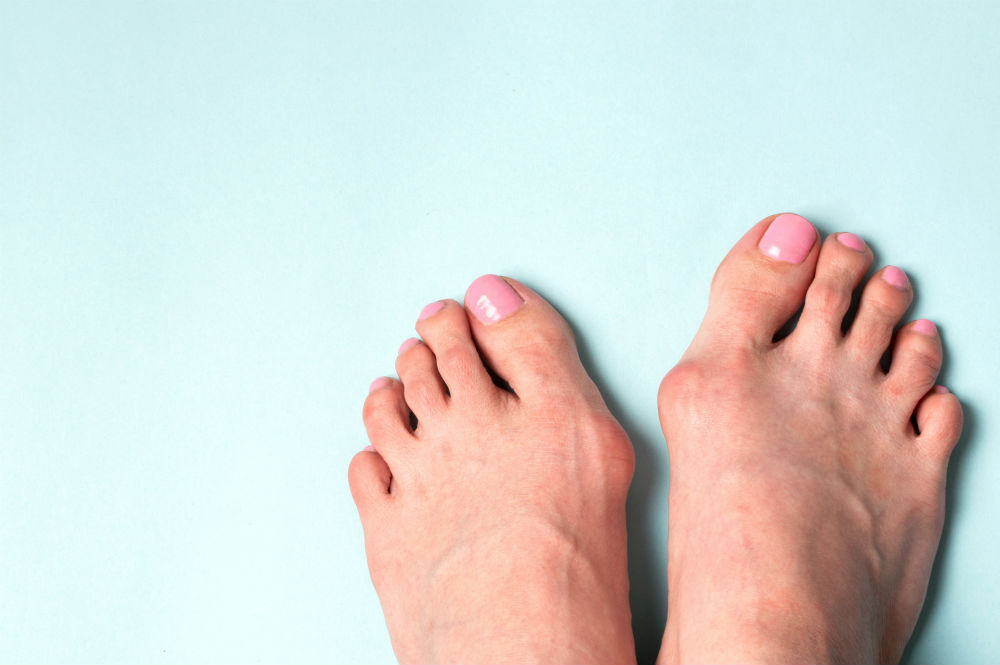Common Foot Conditions As You Age
Everybody ages. In fact, you’re doing it right now!
(So are we. So is everyone.)
This is no reason to panic, of course! As much as we might feel wistful for younger days, there are definitely some advantages to being a little older, wiser, and experienced. And in fact, many psychological studies suggest that, on average, older people are happier on average than younger people!
That said, yes, aging does come with a few physical problems and concerns to contend with—and your feet are no exception to this rule.
It’s no surprise, really. By the time you reach age 80 (if you aren’t there already), you’ll probably have logged over 100,000 miles on your all-time pedometer. That’s enough to walk all the way around the globe four times over! (Assuming you can breathe underwater, of course.)
Several foot conditions are more likely to develop and worsen during your golden years. Here are some of the most common:
Poor Circulation
We list this one first, because it’s one of the core “underlying” conditions that make all kinds of subsequent complications more likely.
Your bloodstream plays a pretty crucial role in keeping the various organs, cells, and structures of your body well nourished with oxygen and nutrients. It also provides the transportation network that your white blood cells use to fight against germs and infections. It even does the clean up work of removing waste products from your cells.
In other words, it’s a gourmet restaurant, police force, and janitorial service all rolled into one!
But circulation to the feet naturally slows a bit as we age even in otherwise healthy individuals, since the heart (like any other muscle) gradually loses strength and pumping power. And unfortunately, poor lifestyle choices (smoking, poor diet, alcohol abuse) or various diseases (diabetes) can make the problem even worse.
More importantly though, the health of your tissues and immune system may be negatively affected in a number of ways—many of which you’ll read about below.
Fungal Toenails
As with many items on this list, there’s no “minimum age” for fungal toenails. If you expose your feet to the right kind of dermatophyte fungus (say from a sweaty pair of shoes or lock room floor) and they find a way under the nail, you can get it at any age.
That said, older adults are at greater risk for a couple of reasons:
- Toenails tend to become thicker and more brittle as we get older. They’re tougher to maintain and more likely to crack or split. So the “door” for fungus to get in and under your nail is open wider and more often than when you were younger.
- Thanks to slower circulation, your natural immune system may not be as readily able to kick out the fungus once it shows up.
Then, there’s just the simple fact that the longer you’ve been on this planet, the more opportunities you’ve had to run into the fungi at one place or another.
Dry and Itchy Skin
More than half of seniors have dry skin to some extent.
The low-humidity, lots-of-sunshine environment here in Tucson certainly contributes to the problem. But even if you take good care of your skin with moisturizers, sunblock, and the like, the truth is that you start to lose oil glands as you age, and that makes it harder to keep your skin lubricated.
Dry skin is usually just an irritation that can be managed with daily moisturizer use. However, severe dry skin (especially when connected with a medical condition like diabetes) can lead to pain and even infection, especially if there are deep cracks or fissures in your heels.
Foot Deformities
Remember when we told you that you’d walk 100,000 miles or more by the time you hit 80? It goes without saying that you can do a lot of wear and tear to your feet in that amount of time and mileage.
No, simply walking a lot does not cause deformities like bunions and hammertoes. Lots of people walk miles per day and never get them.
However, the thing about these conditions (for those who do develop them) is that they are progressive—or in other words, they get worse and worse over time.
If you have an underlying flaw with your foot structure that causes certain bones, tendons, or joints to deal with more weight and pressure than usual—and you compound that error with poor quality footwear—the slow march of time can cause foot deformities to develop and gradually get more and more severe.
Foot deformities don’t self-correct either. The only way to realign the foot is through surgery. So it’s in your best interest to seek treatment as early as possible, when the condition is still minor enough to manage with conservative therapies.
Peripheral Neuropathy
Peripheral neuropathy is associated with advancing age for many of the same reasons as poor circulation. In fact, poor circulation can be a partial cause of peripheral neuropathy, if it can’t provide your nerves with enough oxygen or nutrients to function their best.
Diabetes is another common cause—and another reason why most people first develop the symptoms of peripheral neuropathy after turning 50.
When your nerves start to grow sick and die, all sorts of strange and uncomfortable symptoms can occur. Often, you’ll feel “phantom” pains, tingling, burning, or other sensations in your feet and legs.
As the condition progresses, you may lose all sensation in your feet. While this obviously takes the pain away, it also makes you much more likely to not realize it when cuts or even serious injuries occur—injuries that, with poor circulation, your body is ill-equipped to fight or heal. If you don’t identify and correct the problem in time, you may develop an infection that can force an amputation—or even threaten your life.
But It’s Not All Doom and Gloom
Yeah, we know. Whether you like it or not, aging is going to create some physical and health challenges as you get older. That cannot be completely prevented or avoided.
However, at every age, there’s a huge difference between those who proactively take care of their feet and those who do not.
If you’re exercising, wearing good shoes, eating right, and seeking out a foot and ankle specialist at the first sign of trouble (rather than, say, only once the pain becomes unbearable—or unbearably embarrassing) then you’re much more likely to enjoy active, healthy, and mobile golden years.
Advanced neuropathy treatments. Stabilizing braces and pain-relieving orthotics. Useful, relevant advice on prevention and home management. Compassionate care.
All of this (and more) is available every day from the team at Tucson Foot and Ankle Institute. Take advantage of it! To schedule an appointment with Dr. Shih, give us a call today at (520) 545-0202.
Don’t Wait to Ask for Help!
No matter how far along you are on the path of diabetic foot complications, we can help you. But in severe cases, the existing damage is not always completely reversible. And the longer you wait, the greater your risk of an injury, wound, or infection that leads to a catastrophic change in your quality of life.
So don’t wait until it’s too late! The earlier you see us, the better we can help you.
To schedule an appointment with Dr. Shih, please call (520) 545-5717 today.
Contact Us
Office Hours:
Monday - Friday
8:00AM - 5:00PM
Tucson Foot & Ankle Institute:
7406 N. La Cholla Blvd.
Tucson, AZ 85741
Phone: (520) 545-0202
Fax: (520) 545-0201
© Tucson Foot and Ankle Institute. All Rights Reserved. | Privacy Policy



